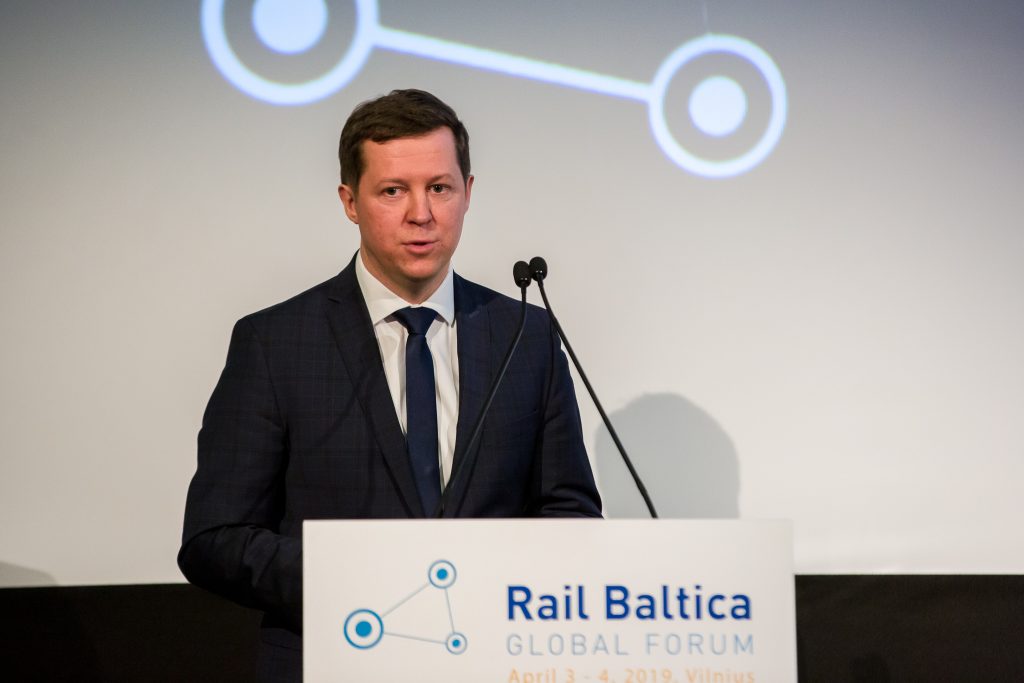The state of emergency caused by the spread of COVID has forced significant changes to our personal and professional lives. The long-term consequences of these changes are still hard to assess but already now many of us are thinking “how will we recover once the state of emergency is lifted?” As the Baltic region’s Project of the Century, Rail Baltica has to play a key role in both helping the Baltic economies weather the current storm, but also in providing a sustained investment stimulus towards medium and longer term economic and social recovery.

By 2026 the total Rail Baltica investment in the Baltic States will reach 5.8 billion euros. Clearly, the gradual absorption of the project’s direct capital investments – co-funded generously by the European Union to the tune of 85% – will provide a significant boost to the local construction, engineering and other service industries. This will naturally stimulate the aggregate demand in the economy and generate GDP growth – countering the recessionary forces that will emerge during and after the immediate COVID crisis.
In 2020 Rail Baltica indicative procurement value in the Baltic States is 788 million EUR. These investments will be directed primarily towards a construction of Rail Baltica international terminals in Rīga and Tallinn and continuing the construction of the main line in Lithuania from Kaunas to the state border of Lithuania and Latvia. The large-scale construction of the main line of the railway is estimated to begin in 2022.
Furthermore, this figure does not capture the value of additional induced investment demand from Rail Baltica–inspired commercial developments, for example, in the areas of urban real estate, regional infrastructure, logistics and industrial activity, as well as joint development of other infrastructure and systems such as road/air/maritime services, communications and 5G, energy and defence. All in all, Rail Baltica can become a true locomotive to help pull the Baltic economies out from a slowdown.
Sustaining and creating jobs
During the peak of the construction works from 2022-2025 Rail Baltica will create approximately 13000 new jobs in the construction industry, with 24000 indirect and induced jobs in the related industries such as material sourcing and component manufacturing, logistics, hospitality and catering, professional services and many others. Altogether, our cost-benefit analysis estimates that for every 50 construction site jobs created, there are 120 new jobs created in directly supporting industries and 145 new jobs created resulting from additional consumption.
Already now, Rail Baltica has created approximately 300 highly-qualified employment positions within the project implementation organisations and in the private sector companies across the three Baltic States. During this year, the number of new jobs will increase, considering the increasing scope of the design works and the beginning of construction works. This will help mitigate employment risks and create jobs for those who need them most.
Opportunities opening for construction material manufacturers and many more
In parallel with creating new employment opportunities, in the short–term Rail Baltica will create new opportunities for local producers to supply the project with mineral materials and railway components, for example, concrete elements, such as sleepers, culverts, precast bridge/viaduct elements, electrification assets, piping/cabling products and many others. The Rail Baltica Joint Venture is currently working on the standardisation of the railway components to provide local companies with these significant new business opportunities. In addition, we will be looking to create incentives also for international suppliers to establish or expand their manufacturing capacities in the Baltic region to further promote job creation, technology transfer and local benefits.
From helping to accelerate high-speed and 5G connectivity using the railway corridor, to providing and creating opportunities for SMEs and start-ups, the Rail Baltica project can use this unique greenfield programme to drive innovation, digitalisation and sustainability in transport infrastructure and services. The months ahead will see hackathons to tackle specific issues in areas such as cost-effective rail freight for smaller cargo, the expansion of cooperation with partners and international projects to show modern digital systems, and the continuation of efforts to make sure innovations can be applied to the existing railways as well as the new infrastructure.
